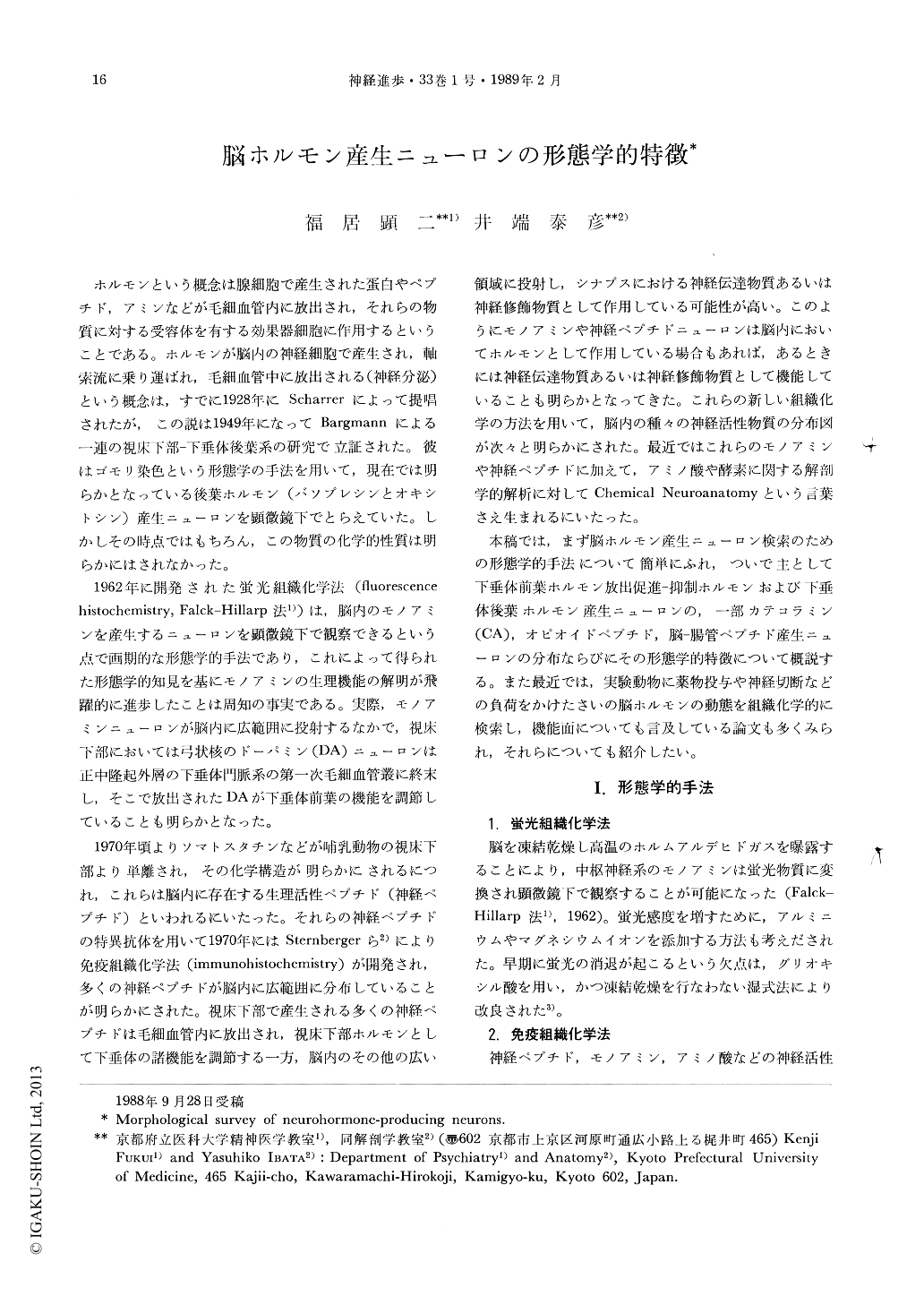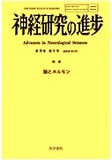Japanese
English
- 有料閲覧
- Abstract 文献概要
- 1ページ目 Look Inside
ホルモンという概念は腺細胞で産生された蛋白やペプチド,アミンなどが毛細血管内に放出され,それらの物質に対する受容体を有する効果器細胞に作用するということである。ホルモンが脳内の神経細胞で産生され,軸索流に乗り運ばれ,毛細血管中に放出される(神経分泌)という概念は,すでに1928年にScharrerによって提唱されたが,この説は1949年になってBargmannによる一連の視床下部—下垂体後葉系の研究で立証された。彼はゴモリ染色という形態学の手法を用いて,現在では明らかとなっている後葉ホルモン(バソプレシンとオキシトシン)産生ニューロンを顕微鏡下でとらえていた。しかしその時点ではもちろん,この物質の化学的性質は明らかにはされなかった。
1962年に開発された蛍光組織化学法(fluorescence histochemistry,Falck-Hillarp法1))は,脳内のモノアミンを産生するニューロンを顕微鏡下で観察できるという点で画期的な形態学的手法であり,これによって得られた形態学的知見を基にモノアミンの生理機能の解明が飛躍的に進歩したことは周知の事実である。実際,モノアミンニューロンが脳内に広範囲に投射するなかで,視床下部においては弓状核のドーパミン(DA)ニューロンは正中隆起外層の下垂体門脈系の第一次毛細血管叢に終末し,そこで放出されたDAが下垂体前葉の機能を調節していることも明らかとなった。
With the recent advance of histochemical techniques, the detailed distribution patterns of various neuroactive substances such as monoamine, neuropeptide and amino acid have been presented. Moreover, the development of electron microscopic immunohistochemistry have allowed us to observe fine structure of the neuroactive substance-producing neuronal systems. These intensive studies have provided that the neuroactive substances act both as neurohormones and as neurotransmitters or neuromodulators in the central nervous system.
In this present articles, we briefly introduced the procedures of fluorescence histochemistry, immunohistochemistry to detect light microscopic and electron microscopic features of amines and neuropeptides and in situ hybridization method which has been developed by the recent genetic technology. As neurohormones, we mentioned about distribution and morphological features of catecholamines, regulatory peptides on anterior pituitary, posterior pituitary hormones, opioid peptides and brain-gut peptides.

Copyright © 1989, Igaku-Shoin Ltd. All rights reserved.


